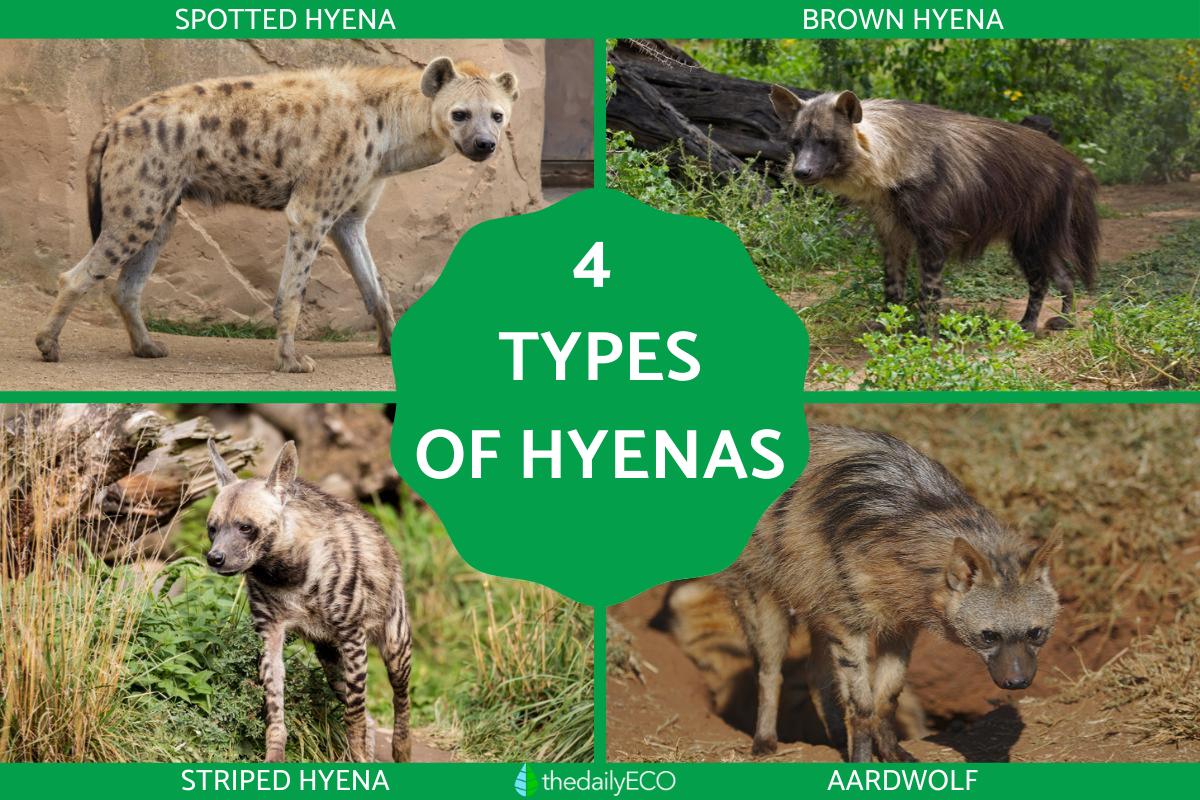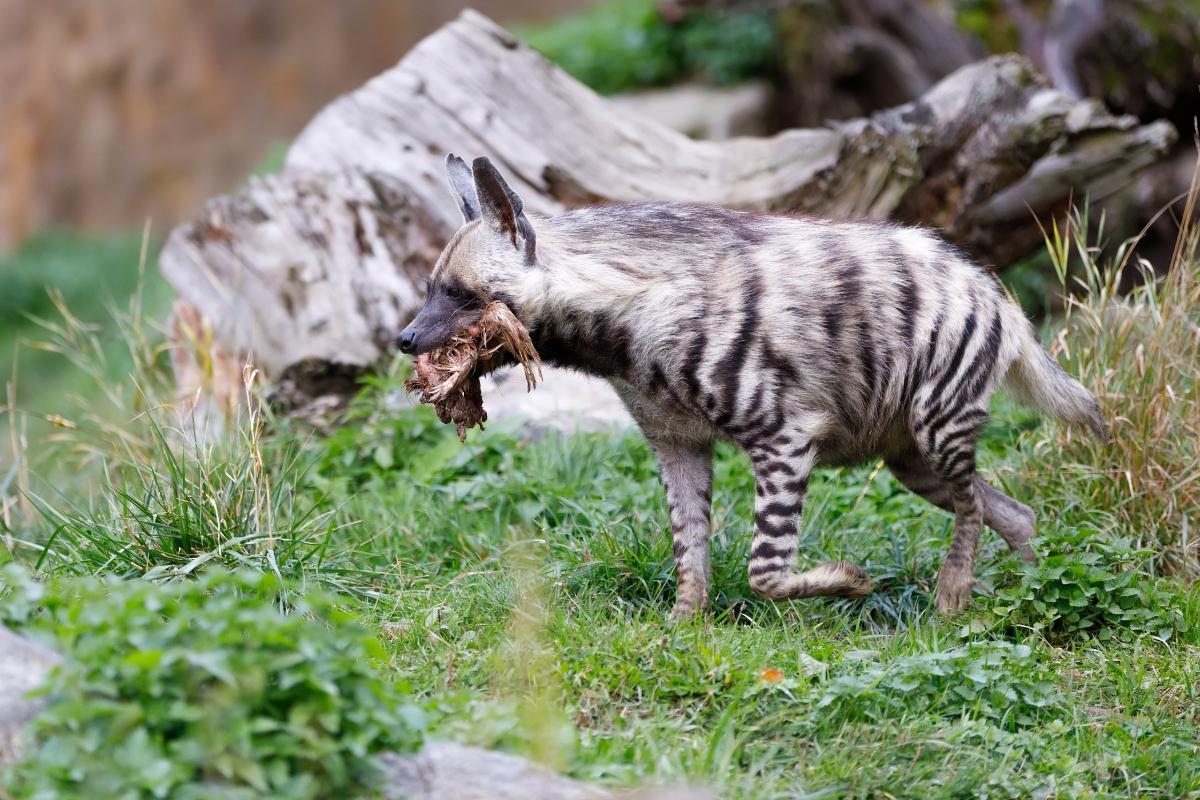How Many Types of Hyenas Are There?


Hyenas are animals that make up the family Hyaenidae. They are a mammal which seems to take characteristics from various other carnivorous animals to create a unique animal with very particular behaviors and traits. Although they more closely resemble dogs, they are genetically more similar to felines. Known for a distinct vocalization which sounds like laughing, they are very important animals for their ecosystems. We may think hyenas are only one animal, but how many types of hyenas are there?
AnimalWised reveals there are 4 kinds of hyena in the wild, all of which make up separate genera in the Hyaenidae family. We look at each individual species more closely to see their similarities and differences, providing photos to depict them more clearly.
Spotted hyena
Also known as the laughing hyena, the spotted hyena (Crocuta crocuta) inhabits the African continent south of the Sahara Desert. Its habitat is open and flat areas such as plains, although they are increasingly being found near human settlements[1]. Its distribution is considered irregular and they are usually restricted to protected areas.
Outside of these areas, closeness to human populations has caused serious problems. The spotted hyenas are persecuted by humans through selective culling, trapping and poisoning. Despite these threats to the spotted hyena species, it has been categorized as being of ‘least concern’ by the IUCN.
- Spotted hyenas measure between 43" and 59" (110 cm and 150 cm), not including the length of their tail which varies between 8" and 14" (20 cm and 35 cm).
- Hyenas weigh on average 154 lb (70 kg) with females being larger than males.
- Spotted hyena fur is short and reddish-yellow in color with characteristic irregular brown spots.
- Its mane is short and the tail has a long tuft of dark hair.
- Spotted hyenas are very fast runners and good swimmers.
- They are mainly crepuscular and nocturnal in habit, usually living in packs led by a female. They are also territorial and protect their area from other groups of hyenas.
- Their gestation period lasts approximately 110 days and they have one to three cubs that are born with soft dark fur.
- Although they are considered scavengers, they hunt in groups of up to 30 individuals and only eat carrion when they deem it appropriate.

Brown hyena
Also known as the strandwolf, the brown hyena (Parahyaena brunnea) is a native of southern Africa, specifically the Kalahari Desert and Namibia. It is typically found in dry areas, particularly along the coast, semi-deserts, open bushland and open wooded savannah. Outside protected areas, brown hyenas may also come into conflict with humans, often being trapped, hunted or poisoned. According to the latest IUCN classification in 2014, the brown hyena has been categorized as ‘near threatened’.
- It is a smaller species than the spotted hyena, as it has an average weight of 88 lb (40 kg) and measures approximately 47" (120 cm). Unlike the spotted hyena, there is very little difference between females and males.
- Brown hyenas feed mainly on carrion and may supplement their diet with fruit. Although they can hunt, they do so in small numbers. They may sometimes steal prey from other predators such as jackals or leopards.
- Its fur is dark and long, especially on the back and tail. The head is more greyish in color.
- Their legs usually have grey fue with and dark stripes that are almost black.
- Its skull is very thick and their jaws sufficiently strong to break and crush bones.
- Females gestate for 97 days, giving birth to up to 5 cubs that are cared for by both parents.

Striped hyena
Despite other types of hyenas having stripes, those of the striped hyena (Hyaena hyaena) are perhaps the most distinct. While they have a wide distribution, populations are irregular within it. They live in savannas, open forests, thorny bushes and deserts in Africa, the Middle East, Pakistan and some regions of India.
Some striped hyena specimens have been found near large human settlements such as Tel Aviv. It has become extinct on the European continent. Its main threats are associated with persecution by humans and the reduction of its food source. This is because the prey animals on which they feed are also facing threats. For these reasons, striped hyena populations are in decline. According to the IUCN, it is a species that is ‘near threatened’.
- The striped hyena is one of the smallest hyenas, reaching 39 to 45" (100 to 115 cm) in total length. This includes its tail.
- Females weigh up to 77 lb (35 kg) while males can exceed 88 lb (40 kg).
- Its fur is greyish brown with characteristic black stripes on its legs and the sides of its body.
- Its mane extends from the nape of its neck to its furry, white tail.
- Their ears are large and usually erect.
- Its diet is based on small marsupials and rodents, although it can feed on eggs, birds, carrion and even large herbivores.
Despite having certain similarities, the hyena is very different to the wolf. Learn about the different types of wolves in our related guide.

Aardwolf
Although its common name may suggest they are lupine animals, the aardwolf (Proteles cristata) is indeed a type of hyena. Even more confusingly, they are also known as the maanhaar-jackal, but they also go by civet hyena or termite-eating hyena. These names illustrate the fact that hyenas appear to have traits of various other animals, but they are still uniquely themselves.
Fortunately, the aardwolf is classified as of ‘leas concern’ by the IUCN, helped by the fact it is found in protected areas. There are two distinct populations of this species. The first is distributed in southern Africa in Botswana, Namibia, South Africa and parts of Angola, Zambia and Mozambique. The second is found from central Tanzania, Uganda, Kenya, Somalia to the deserts of Ethiopia, Sudan and southern Egypt.
- They can measure up to 31" (80 cm) in total length and weigh up to 33 lb (15 kg), although they are usually smaller than this.
- They are solitary and nocturnal animals that usually rest in galleries during the day.
- Unlike other members of the Hyaenidae family, the aardwolf is an insectivorous hyena. Correspondingly, they have very small teeth and rudimentary molars. If you want to learn more about insectivorous animals, check out our article on the different animals that eat ants.
- Its diet is mainly based on termites that it captures with its slimy tongue, although from time to time it can consume small vertebrates such as birds and rodents.
Now that you know the 4 different types of hyenas, you may want to learn about the 9 different types of tigers.

If you want to read similar articles to How Many Types of Hyenas Are There?, we recommend you visit our Wild animals category.
1. Belton, L. E., Cameron, E. Z., & Dalerum, F. (2016). Spotted hyaena space use in relation to human infrastructure inside a protected area. PeerJ, 4, e2596.
https://doi.org/10.7717/peerj.2596
- IUCN. (2024). The IUCN Red List of Threatened Species.
https://www.iucnredlist.org









